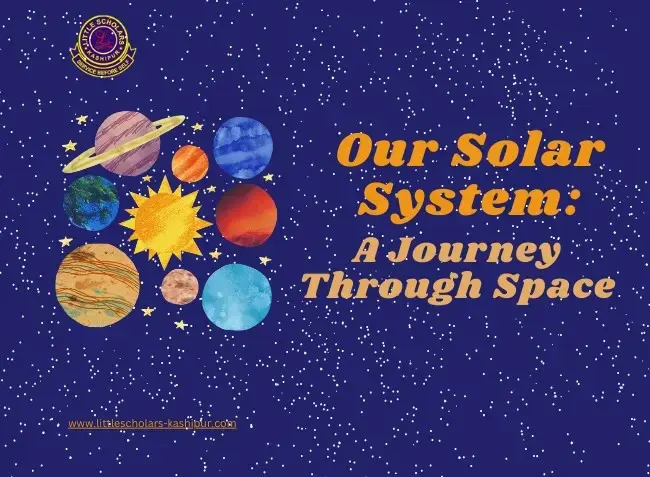Hey there, young explorers! Are you ready to strap on your imaginary space helmets and join me on a thrilling journey through our solar system? That's right! Today, we're hopping on a spaceship of imagination to visit our neighboring planets and discover some truly out-of-this-world facts. So buckle up, and let's blast off into the cosmos!
Welcome to Our Cosmic Neighbourhood
First off, let's talk about what the solar system is. Picture it as a big, swirling neighborhood where our home, Earth, lives along with other planets, moons, asteroids, and comets. At the center of this neighborhood is our Sun, a massive star that holds everything together with its gravity. It's like the sun is the parent, and the planets are the kids dancing around it!
The Sun: Our Shining Star
Before we visit the planets, let's give a shoutout to the Sun. Did you know it's over 4.6 billion years old? That's super old! It's not just a big light bulb in the sky; it's a giant ball of hot gas that provides the warmth and energy we need on Earth. Without the Sun, our planet would be a cold, dark, and lifeless place. So, thank you, Sun!
Exploring Opportunities for Learning: The Importance of Technology in Education: Read more
Mercury: Speedy and Close
Our first stop is Mercury, the closest planet to the Sun. Mercury is like the speedy little sibling of Earth. It's the smallest planet in our solar system and has no moons. Because it's so close to the Sun, a year on Mercury (the time it takes to go around the Sun) is just 88 Earth days. But here's a weird fact: one day on Mercury (one full rotation) is 59 Earth days long. So, on Mercury, a day is longer than a year!
Venus: Earth's Hot Twin
Next up is Venus, often called Earth's twin because they're similar in size and composition. But don't be fooled! Venus is the hottest planet in our solar system, with temperatures hot enough to melt lead. Its thick atmosphere is filled with clouds of sulfuric acid. Not exactly a vacation spot, but interesting to study from afar!
Earth: Our Blue Marble
Ah, sweet Earth, our home! It's the only planet we know that supports life. Earth is unique because it has liquid water, a breathable atmosphere, and a perfect temperature range. We're just the right distance from the Sun, which is why scientists call our home the "Goldilocks Zone" - it's just right! Our planet is teeming with life, from the deepest oceans to the highest mountains.
Mars: The Red Planet
Mars is our next-door neighbor and is known for its red, dusty landscape. Scientists are super interested in Mars because its surface has signs that liquid water once flowed there. Today, Mars is a cold desert, but it has the largest volcano and canyon in the solar system! We've sent rovers like Curiosity to explore its surface and learn more about its history.
Jupiter: The Giant
Hold on tight because we're now approaching Jupiter, the largest planet in our solar system. It's so big that over 1,300 Earths could fit inside it! Jupiter is a gas giant, which means it doesn't have a solid surface. It has a famous storm called the Great Red Spot, which has been raging for hundreds of years. Jupiter also has a lot of moons - 79 at last count!
Saturn: The Ringed Beauty
Saturn is probably the most recognizable planet thanks to its stunning rings. These rings are made of ice and rock and are as wide as 22 Earths lined up but only as thick as a building! Like Jupiter, Saturn is a gas giant and has a lot of moons, with Titan being the largest and most interesting to scientists.
Uranus: The Sideways Planet
Uranus is a bit of a mystery and quite the oddball. It's tilted so far on its side that it orbits the Sun like a rolling ball. This means it has extreme seasons, each lasting over 20 years. Uranus is an ice giant, and its blue color comes from the methane in its atmosphere. It's a chilly, distant, and windy world.
Neptune: The Windy Ice Giant
Last but not least, we have Neptune, the furthest planet from the Sun in our solar system. It's similar to Uranus but is known for having the fastest winds, which can reach speeds more than the sound! Neptune is a dark, cold, and stormy place, with a deep blue color also caused by methane.
Beyond the Planets
Our solar system doesn't end with the planets. Beyond Neptune, we have the Kuiper Belt, home to dwarf planets like Pluto and many comets. And even further out is the Oort Cloud, a giant sphere of icy objects surrounding our solar system. Who knows what mysteries lie out there?
The Ever-Expanding Universe
Our journey through the solar system shows just how vast and varied our cosmic neighborhood is. Each planet has its own story, and there's so much more to discover. Remember, space exploration is all about curiosity and imagination. Who knows? Maybe one of you will be the next great astronaut or astronomer to uncover the universe's secrets!
Healthy Mind Healthy Grades Mental Health Tips for Students: Read more
So, keep looking up at the stars and dreaming big. The universe is a giant place waiting for us to explore it, one planet at a time. Safe travels, space cadets, and until our next cosmic adventure!




